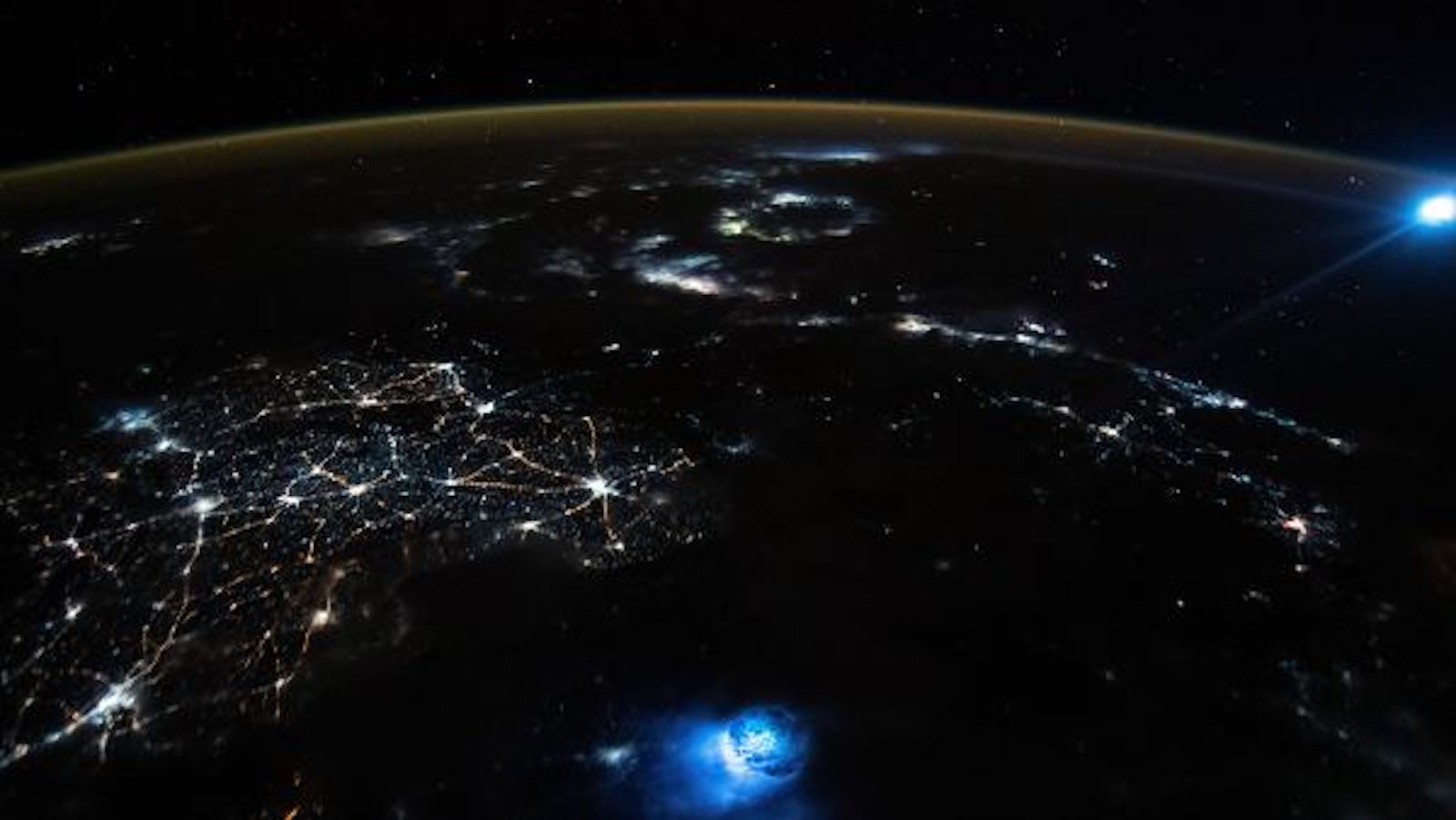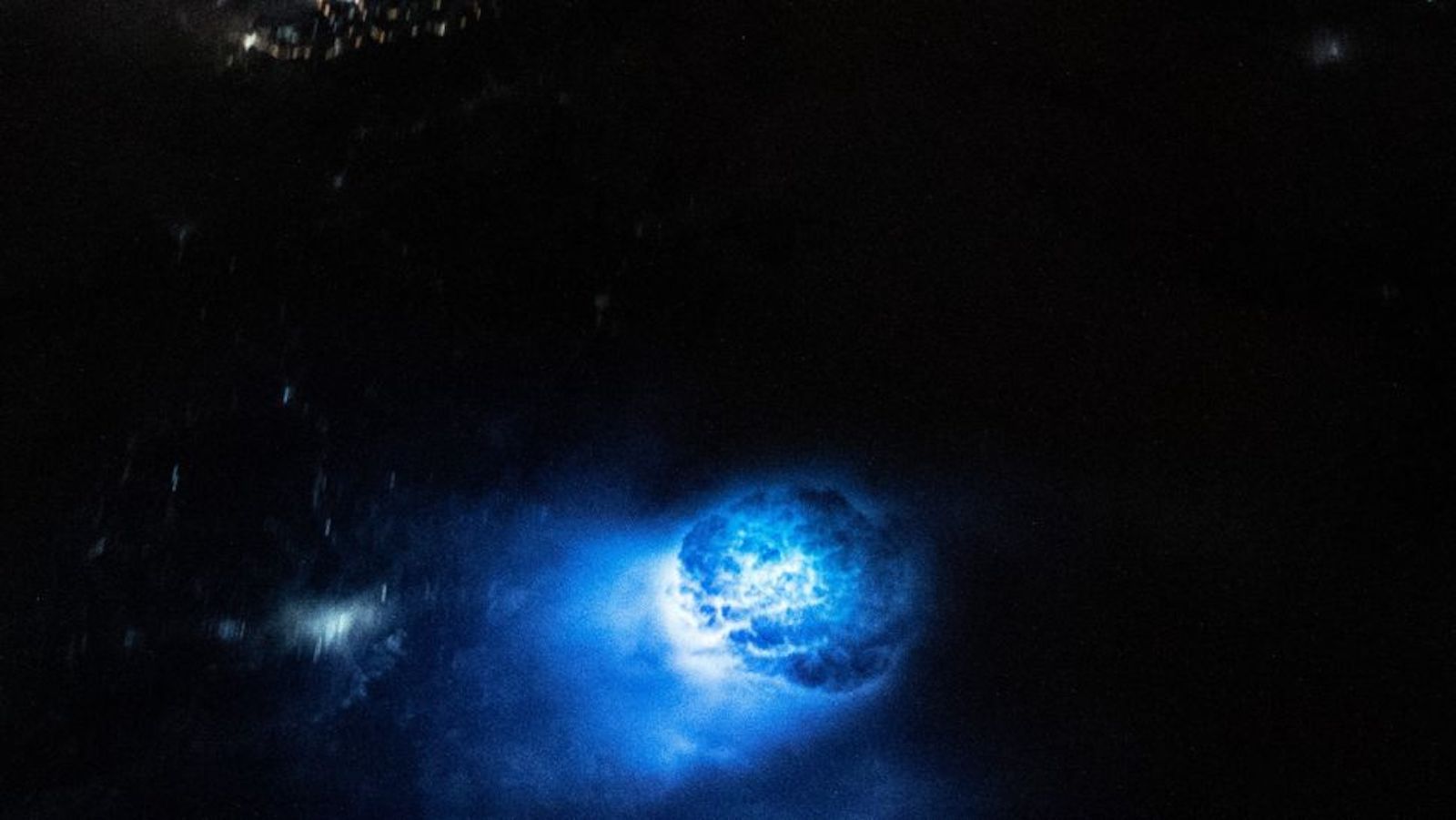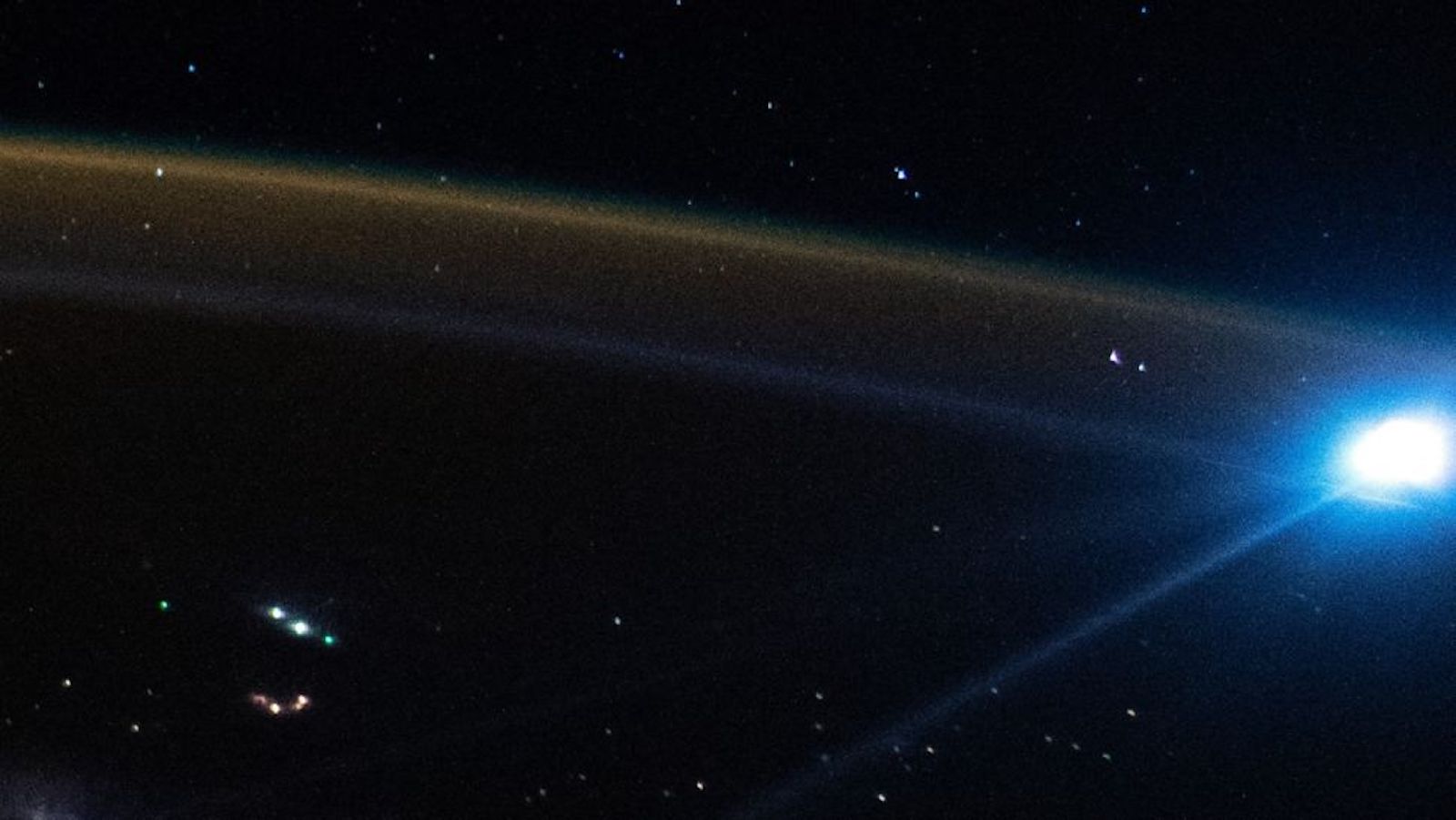Bizarre blue blobs hover in Earth's atmosphere in stunning astronaut photo. But what are they?
An astronaut onboard the ISS recently captured a peculiar image of Earth with two unrelated blue blobs of light shining in the planet's atmosphere.

An astronaut onboard the International Space Station (ISS) has snapped a peculiar image of Earth from space that contains two bizarre blue blobs of light glimmering in our planet's atmosphere. The dazzling pair may look otherworldly. But in reality, they are the result of two unrelated natural phenomena that just happened to occur at the same time.
The image was captured last year by an unnamed member of the Expedition 66 crew as the ISS passed over the South China Sea. The photo was released online Oct. 9 by NASA's Earth Observatory.
The first blob of light, which is visible at the bottom of the image, is a massive lightning strike somewhere in the Gulf of Thailand. Lightning strikes are typically hard to see from the ISS, as they're usually covered by clouds. But this particular strike occurred next to a large, circular gap in the top of the clouds, which caused the lightning to illuminate the surrounding walls of the cloudy caldera-like structure, creating a striking luminous ring.
Related: Upward-shooting 'blue jet' lightning spotted from International Space Station
The second blue blob, which can be seen in the top right of the image, is the result of warped light from the moon. The orientation of Earth's natural satellite in relation to the ISS means the light it reflects back from the sun passes straight through the planet's atmosphere, which transforms it into a bright blue blob with a fuzzy halo. This effect is caused by some of the moonlight scattering off tiny particles in Earth's atmosphere, according to Earth Observatory.


Different colors of visible light have different wavelengths, which affects their interaction with atmospheric particles. Blue light has the shortest wavelength and is therefore the most likely to scatter, which caused the moon to turn blue in this image. The same effect also explains why the sky appears blue during the daytime: because blue wavelengths of sunlight scatter the most and become more visible to the human eye, according to NASA.
Also visible in the photo is a glowing web of artificial lights coming from Thailand. The other prominent sources of light pollution in the image are emitted from Vietnam and Hainan Island, the southernmost region of China, though these light sources are largely obscured by clouds. The orange halo parallel to the curvature of the Earth is the edge of the atmosphere, which is commonly known as "Earth's limb" when viewed from space, according to Earth Observatory.
Get the Space.com Newsletter
Breaking space news, the latest updates on rocket launches, skywatching events and more!
Originally published on Live Science.
Join our Space Forums to keep talking space on the latest missions, night sky and more! And if you have a news tip, correction or comment, let us know at: community@space.com.

Harry is a U.K.-based staff writer at Live Science. He studied Marine Biology at the University of Exeter (Penryn campus) and after graduating started his own blog site "Marine Madness," which he continues to run with other ocean enthusiasts. He is also interested in evolution, climate change, robots, space exploration, environmental conservation and anything that's been fossilized. When not at work he can be found watching sci-fi films, playing old Pokemon games or running (probably slower than he'd like).










